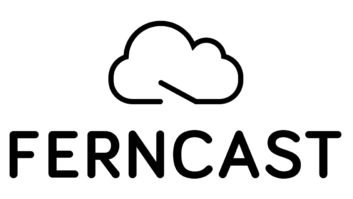
The Motorola Photon is shown with the Pioneer DEH-9400BH car receiver. Audio from the phone is linked via Bluetooth to the car receiver, with the side benefit of providing a hands-free method for phone calls. Will IP streaming to the car replace broadcasting? Is the public Internet the technology that will soon and forever replace FM radio, as FM replaced AM in its turn?
Recently I’ve caught a number of articles and news pieces discussing audio streaming that indicate it’s finally getting some legs. As noted in a recent article in Radio World, an NPR Labs study seems to test the range of reliability in the bandwidth and to find the appropriate codec to occupy that bandwidth. No matter how you approach streaming, the issue always will come down to bandwidth, reliability and availability in mass simultaneous consumption.
There is no question that cellular data growth has gone through waves of good and bad. This ExtremeTech article suggests that while consumers are demanding new data capacity at an increasing rate, cell phone carriers are currently just barely able to stay ahead of this demand and the requirement for constant technology upgrades.
LONG-TIME FAN
I’ve been streaming audio for nearly 14 years now and have had firsthand experience with its issues.
I have always streamed audio for the purpose of personal listening while traveling locally in my car or when afar. I started out tethering, then using data cards with laptops and Winamp as my player. When I got my first (Palm) smartphone, I started using that and have been using the handheld devices since. I have had a Motorola Photon dedicated to my car since it came out, primarily for streaming, but it simultaneously serves as a GPS and a hands-free phone via its Bluetooth connection to my after-market Pioneer DEH-9400BH CD/AM/FM HD Radio.
Over the years, the cellular industry has moved data pricing steadily upward. Some have offered unlimited data plans on their phones but stop short of providing that for tethering, hot spots and their tablets. When you consider the amount of data you can rack up in a month, it can be a challenge to stay below your data plans cap. This can quickly become expensive if you don’t choose the right plan and stay diligent of your use or have an unlimited data plan. It is certainly a deterrent to the technology taking flight when the customer realizes the cost for data usage is more than that of a satellite subscription!
In addition to cost factors are the reliability of the networks and the availability of needed bandwidth. Users have seen great reductions in bandwidth availability, with massive sales of new hot Apple and Android device releases, as well as carriers throttling back the speeds for known heavy users. Additionally, the technology itself has not really been developed or optimized for the “continuous, uninterrupted” delivery of data. The occasional email check, website visit, etc., does not require a continuous flow of data. Spurts of data back and forth are typical and occasional network latency doesn’t affect these uses, but it is not at all good for streaming. So, today we still deal with dead spots in data coverage and multiple networks (3G/4G/LTE) that don’t deliver streaming-capable coverage in 100 percent of a particular town or market.

Scott Clifton Why is coverage less than complete? Switching from site to site has long not been a problem, unless there are coverage gaps or bad hand-offs. However, newer networks take time to build, and are slowed with backward compatibility in some cases, so the coverage starts out and remains spotty for some time until the new technology can be implemented fully. This is an issue for streaming media, as I’ve not found any of my phones capable of switching between the data networks and not dropping the stream in the process. This at least is the situation for me with Sprint and AT&T using iPhone 5, EVO and Photon smartphones. I keep my car phone locked on 3G only, as it has had better coverage than the 4G network and results in far fewer dropouts by not needing to switch back and forth.
STILL GROWING
The mobile data industry makes a ton of money. Supply and demand has certainly been a factor for their growth. To really get a better look at the industry’s anticipated growth, take a look at CTIA’s fact sheet, from which I come away with the idea that the industry will only continue to grow and provide their customers what they desire.
However, the bottom line is that no single drive route test is a tell-all for the technology. There are too many different factors that each user will face in each location.
There are known places where I always get dropouts when driving the many miles to and from work each day here in Chicago, but there are some that come and go, as a result of being down, out of bandwidth due to congestion or a total lack of coverage. I can tell you too that there are many places where the networks operate very poorly with data and lacking in anything more than 3G, if they have any coverage at all. If you live in Billings, Mont., you likely don’t have Sprint, since they have only roaming coverage there. There are many places not yet ready to handle this demand.
The NPR Labs study seeks to find the optimum codec and bitrate for a mobile stream. While they state they used multiple smartphones for their test, it appears they only use one unnamed cellular provider. Based on my experiences, the results are certain to vary greatly from city to city, carrier to carrier, and device to device. I know the technology has been good enough in Chicago for some time to be a competitive distribution system; there are fewer dropouts in some places with my cellular data coverage than many of the HD Radio signals. I am sure the cellular companies will continue to improve their data provisions, but listening to a stream may come at a hefty cost as the demand for more of it continues to grow, unless the data rates are kept as low as possible.
LESS IS MORE
So, we’ve come full circle and I have just stated what I thought was the obvious: The least amount of bandwidth we can get away with using is beneficial for us all. The choice of codec thus follows the constraints of bandwidth, with the tradeoff of sound quality for the given bit reduction required. I’ve been using AAC+ for some years now at 96 kbps, but I always have an ear listening for the next generation of codec. Opus is certainly getting a lot of buzz, for which I am just starting to test. OGG did well for its day, but AAC is more for the purist. Opus seems to be the next real challenger at the moment for low-bitrate codecs like AAC+. I’m sure we’ll all be learning more about it and other codecs in the future. Suffice to say, there is a definite need for continued development to get a good-quality codec to work at the lowest rate. Is the cellular industry ready for this kind of data demand? I’ll go out on a limb and say no, not right now … But given the challenges, I bet they’ll find a way to make it happen.
Scott Clifton is chief engineer at Cumulus Radio Chicago. Comment on this or any story to[email protected].












